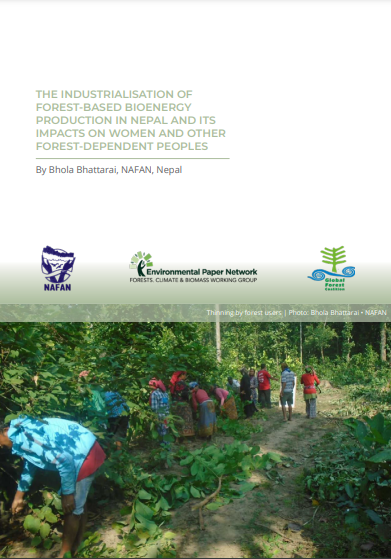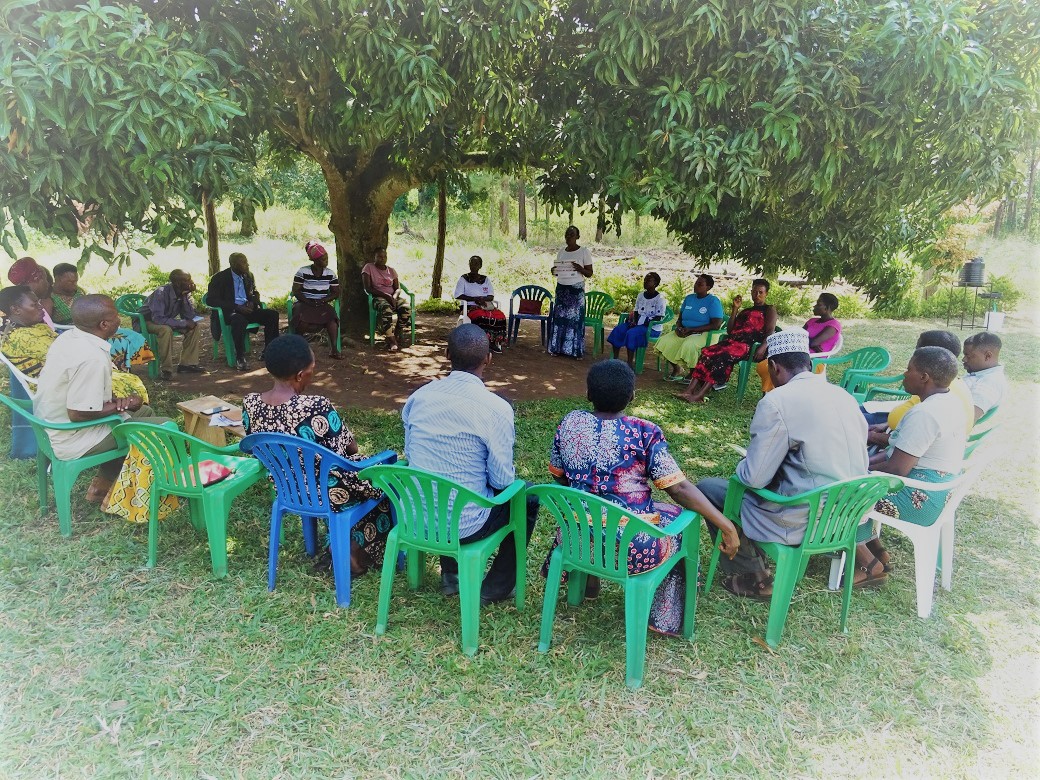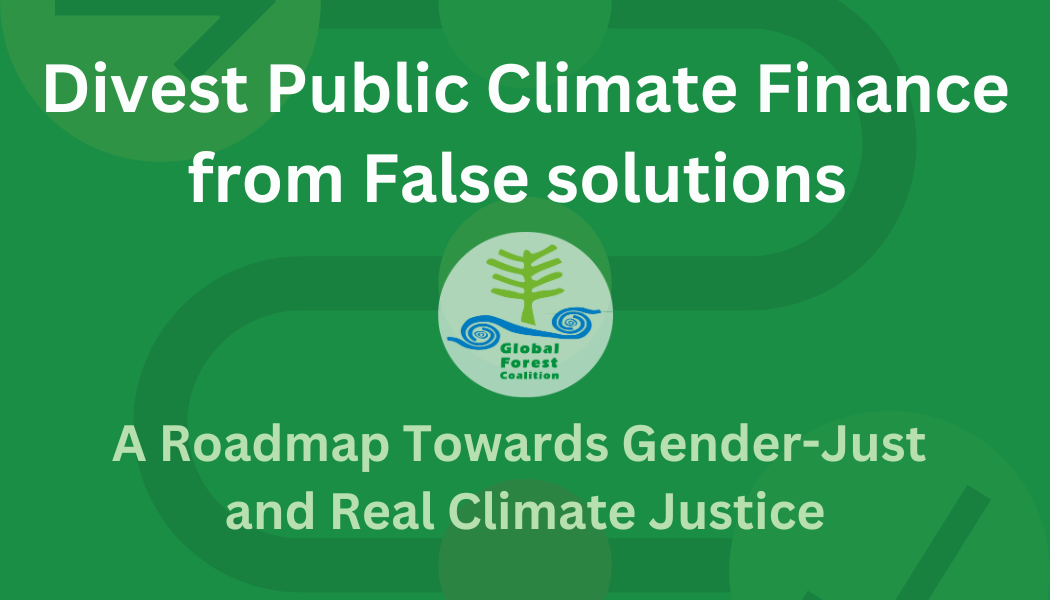The industrialisation of forest-based bioenergy in Nepal and its impacts on women and other forest-dependent peoples

The Industrialisation of Forest-Based Bioenergy Production in Nepal and Its Impacts on Women and Other Forest-Dependent Peoples
By Bhola Bhattarai
Introduction
The large-scale burning of forest biomass for energy, primarily through the use of wood pellets, has proliferated over the past 15 years. This growth has largely been fuelled by the false claim that the burning of forest biomass is carbon neutral—a flawed approach exploited in the climate accounting that helps the European Union, United Kingdom, United States, South Korea, Japan, and other industrialised nations “meet” emissions reduction targets under the Paris Agreement.
Bioenergy is a form of so-called renewable energy, generated from the conversion of biomass into heat, electricity, biogas, and liquid fuels. Biomass is organic matter derived from forestry, agriculture, or waste streams.
According to Bioenergy Europe’s Supply Report 2021, since 2000, the overall use of bioenergy has tripled from 41 million tonnes of oil equivalent (Mtoe) in 2000 to 117 Mtoe in 2020, with over 70% of that coming from forest biomass, largely in the form of wood pellets. In 2018, the global demand for industrial wood pellets exceeded 52 million tonnes, with the EU and UK being by far the largest pellet consumers in the world with an annual consumption of 27 million tonnes. The market for wood pellets in Asia is also continuing to grow, largely led by South Korea and Japan, and is becoming the driving force of the global pellet market alongside Europe. Between 2012–2019, the sector saw an annual growth rate of 11.6%, with the highest growth rate in Asia at 49%, followed by Oceania at 30%, according to the World Bioenergy Association. Without urgent policy intervention, this demand is projected to continue to grow over the coming years as countries continue to expand the use of bioenergy to meet increasing energy demands.
Not only is burning forest biomass not carbon neutral, it also actively harms the climate, emitting large quantities of greenhouse gases into the atmosphere, as well as emissions from the supply chain and logging industry. It also directly harms forests, threatening biodiversity and climate resilience. Furthermore, it brings harm to people and threatens the rights, interests, lives, livelihoods, and cultural values of Indigenous Peoples, local communities, and women (Environmental Paper Network, n.d.). Nepal has recently sought to capitalise on the growth of the global forest biomass market and take advantage of government policies, largely under the Biomass Energy Strategy 2017, by supporting the expansion of industrial biomass production. This report looks at the development of the forest biomass industry in Nepal and its economic, social, and environmental impacts, specifically on women and forest-dependent communities in Sarlahi district in Southern Nepal.
Government Bioenergy Policies and the Growth of Industrial Biomass Production in Nepal
Traditional biomass energy, including firewood, cattle dung, and agricultural residues, is still the major source of energy in Nepali rural communities, providing 77% of the country’s energy needs.
From the perspective of the bioenergy industry, with 45% of the country under forest cover, Nepal is “rich” in forest biomass. According to government figures, the total above-ground air-dried biomass of trees in the forests of Nepal is equal to 1,159.65 million tonnes—an average of 194.51 tonnes per hectare. According to government calculations, that means around 2.76 million tonnes (Mt) of biomass in the form of pellets are potentially available from forest-based biomass. The government says this includes logging residues (stumps, branches, leaves, defect logs, off-cuts, and sawdust), industrial residues (sawdust, bark, slabs, edging, trimming), and invasive plants and trees.
The biomass industry in Nepal dates back to the 1980s, when companies such as Nepal Bio-Extruder Industry Pvt Ltd established factories in Kathmandu, Dharan, and Butwal, converting rice husks into energy, including through the manufacture of bio briquettes. However, the processes were inefficient, extremely polluting, and faced myriad technical difficulties, leading to many companies closing down. Since then, many more raw materials have been cleared for use in bioenergy, such as agro-forest waste, stumps, defective logs, sawdust, sal leaves, “invasive” plant species”, pine needles, and industrial wood waste, among others. To date, 182 alien flowering plant species are known to be naturalized in Nepal, of which 27 species are considered invasive and cleared for use in producing charcoal for briquette industries in Nepal. The number of naturalised and invasive alien plant species (IAPS) is continuously increasing. Small and local enterprises continue to produce charcoal and biomass briquettes in various forms for use as heat and cooking energy for both commercial and domestic use. However, over the past decade, Nepal has placed an ever greater focus on industrialising its bioenergy production. Through its Biomass Energy Strategy 2017, Nepal has identified forest-based bioenergy, along with hydro, wind, and solar power, as a key element in charting the country’s sustainable energy development and transition to “clean energy solutions.” Under this strategy, the government is promoting the development of industrial forest biomass production. The strategy aims to provide technical and financial assistance for research and development of modern, efficient, and affordable biomass energy technologies and industries. This plan is in direct contradiction to the science and increasing awareness that the industrialisation of the bioeconomy is harmful to the climate, nature, and biodiversity, harmful to human rights, and incompatible with a just transition from the fossil fuel economy.
According to Nepal’s second Nationally Determined Contributions (NDC) submitted to the United Nations Framework Convention on Climate Change (UNFCCC) on December 8, 2020, the country aims to be net zero by 2050, with transitions to “clean” energies as a key element to achieving that goal. To achieve this, it will expand clean energy generation from approximately 1,400 MW to 15,000 MW by 2030 in the form of mini- and micro-hydro power, solar, wind, and bioenergy. At the same time, it has committed to maintaining 45% of the total area of the country under forest cover (including other wooded land limited to less than 4%), by 2030, as well as manage 50% of Tarai and Inner Tarai forests and 25% of middle hills and mountain forests sustainably.
The government strategy falsely claims that a shift to industrial biomass energy production from agricultural residues, forest biomass and residues, as well as organic waste can be achieved alongside supporting environmental conservation through the sustainable production of biomass energy. The strategy states that it has provisioned for “proper and efficient utilization” of available biomass resources and will therefore contribute to forest conservation. The shift to renewable energies will also reduce demand for importing fossil fuels such as Liquefied Petroleum Gas (LPG), it says.
The promotion of alternative energy sources, including bioenergy, is also present in the Fifteenth Periodic Plan of the Government of Nepal 2019-24. It states that cost-effective bioenergy technologies such as biogas and improved stoves, gasifiers (thermal and electrical technology), bio-briquettes, electric stoves, and other equipment will be promoted and expanded. To support the growth of the alternative energy sector, fixed loans are also being made available to companies at subsidised rates and the government established a Central Renewable Energy Fund to make funds available at the provincial and local levels. The Government of Nepal also plans to mobilize resources from the Green Climate Fund and other national and international environment and climate change funds for the promotion of alternative energy including wood pellet production.
Under these initiatives, several private companies have proliferated, benefiting from international climate funding and favourable financing and loans from local commercial banks, including NMB Bank. In addition, there are at least ten companies in Nepal producing forest-based briquettes and pellets for the domestic market. In a recent interview, Sushil Gyawali, the chair of the Biomass Entrepreneur Association Nepal (BEAN), said companies producing biomass and charcoal briquettes and wood pellets are “fully sourcing their raw materials from forest waste, and the quantity of fresh biomass that will be converted to prepare charcoal will be around 15,000 metric tonnes per year.” However, the sourcing of fresh biomass from Nepal’s forests for the production of wood pellets is double that, at some 30,000 metric tonnes a year, he said. At current rates, that is equal to just 1–2% of the total available biomass, he said, adding that this rate is likely to increase rapidly, especially to fuel enterprises in more remote areas of the country as Nepal seeks to increase development over the next 20 years.
Gyawali explained that investments from new firms such as Prajuli Biomass, Bakas, and Himalayan bio-briquette are motivated by the overall strength of the national energy market, as well as international markets, with many planning to export biomass products. However, questions still remain regarding confidence in government policies to prioritise the sector in the coming years, he said. He also identified challenges in terms of accessibility of biomass sourcing and processing plants: In some cases, on-site primary processing of forest waste to make it transportable is possible, whereas forest waste has to be charred or processed on smaller patches of forest. However, as stated above, the social, environmental, and economic impacts of industrial production of bioenergy from forest biomass are harmful, unsustainable, and counter-productive and as such, this practice is incompatible with the country’s climate targets.
As highlighted by Biofuelwatch and other NGOs, including the Global Forest Coalition (GFC), it will take huge areas of land and huge quantities of wood to supply a tiny fraction of the energy we use—directly threatening forests, local communities, and climate mitigation targets. Furthermore, arguments that biomass emissions should be considered to be zero at the point of combustion because carbon has been absorbed during the growth of the trees are not credible. Burning biomass immediately releases CO2 into the atmosphere and it can take years for that same amount of CO2 to be locked into biomass by a plant. Biomass also emits more greenhouse gases per unit of energy than most fossil fuels.
A new report from the US—the world’s leading wood pellet exporter—shows how the global pellet industry is devastating US forests. A recent report from the BBC also exposed how an industrial wood pellet company in the UK was directly responsible for the cutting down of primary forests in Canada. This should be an alarm bell for other countries such as Nepal, not to follow in their footsteps but rather focus on truly renewable energies.
Industrial Biomass Wood Pellet Production in Sarlahi District, Southern Nepal
Founded in 2016, Bakas Renewable Energy Ltd. is the first company to produce bioenergy from forest biomass on an industrial scale in Nepal. In 2021, it began operations of sourcing and producing wood pellets from forest biomass in the state-owned Sagarnath Forest Development Project in Sarlahi District of southern Nepal, with a projected production capacity of 20,000 tonnes of wood pellets per year.
Under a 20-year agreement with the state Forest Products Development Board, Bakas, in partnership with Arbonaut Ltd, Finland, is collecting raw material from the forest undergrowth of the government-owned, 13,000-hectare Sagarnath Forest Development Project (personal communication with a representative of Bakas, August 07, 2022). According to the terms of the agreement, Bakas can collect 30,000 metric tons of forest biomass per year—equivalent to 50% of the existing biomass on the forest floor—from 27 types of species including grass, bushes, and invasive species. However, the amount of biomass being removed is not yet being monitored and local forestry officials and community members told GFC that the company was removing more biomass from the forest than permitted under the agreement. Bakas is also authorised to use forest land to collect and store biomass at five sites in the area.
The project has equity investment from the competitive climate challenge fund of the Nordic Climate Facility (NCF) Grant, financed by the Nordic Development Fund (NDF), as well as financing from Business Oxygen (BO2), an SME Venture Fund in partnership with the International Finance Corporation (IFC). The NMB Bank of Nepal is also providing debt financing and a working capital loan for the production of biomass pellets, reflecting strong investment interest in industrial biomass production from local commercial banks.
According to the representative of the company, a total of about 27,000 tonnes of raw materials including forest biomass, farm field biomass, sawdust, and agriculture byproducts (e.g. bagasse/ply waste, dried biomass/agricultural waste, sawdust/cut pieces) are being collected every year. The company’s manufacturing unit is located in Sarlahi center Tarai of southern Nepal. According to the company, they have been extracting around 15,000—20,000 tonnes of forest biomass from the Sagarnath Forest Development Project located in Sarahi and Mahottari for the past year, but the proj











